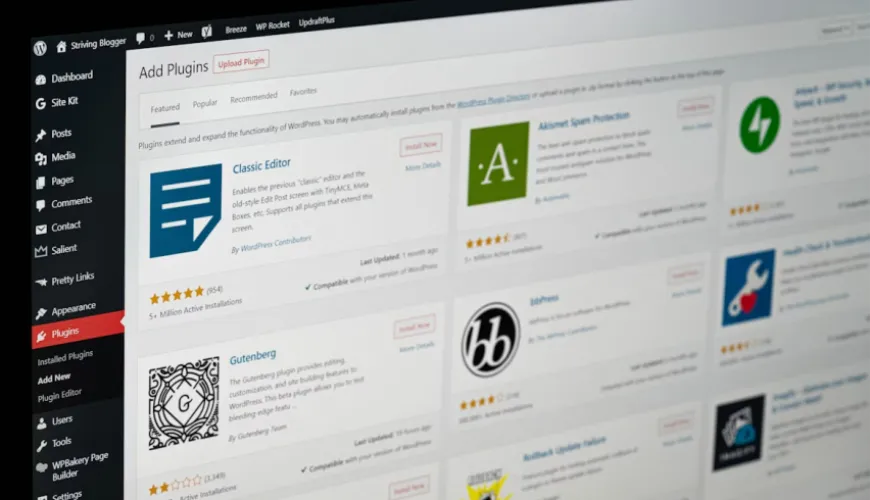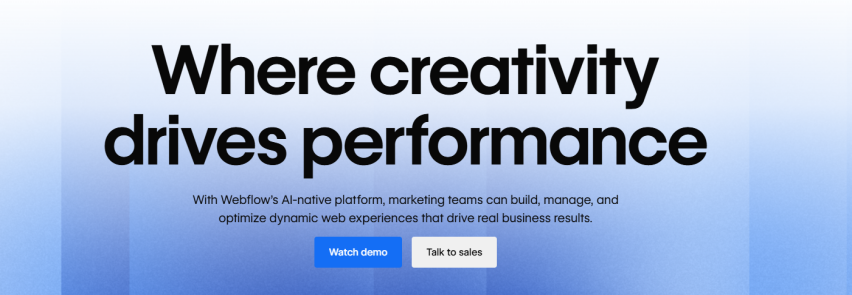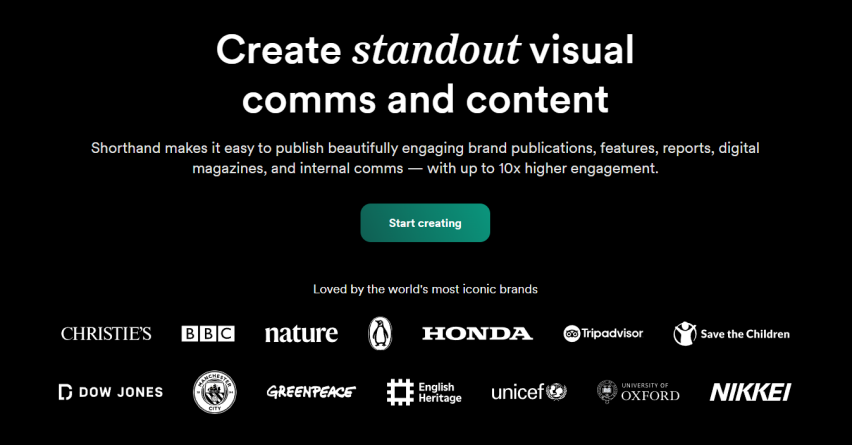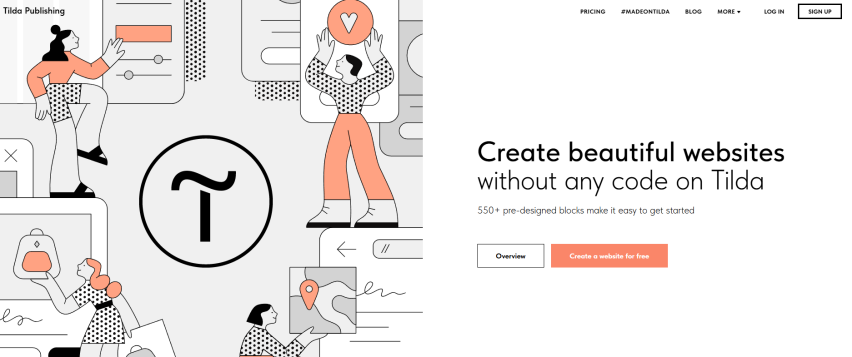How to Choose a Storytelling Website Builder: Features, Pricing & Performance Compared

Your audience makes snap judgments in three seconds. Static content loses them instantly, but interactive stories? They stay for minutes, sometimes hours. That's the power of choosing the right storytelling website builder.
Not all website builders create stories. Traditional platforms like WordPress or Squarespace build pages. Storytelling builders create experiences. They transform your message into an immersive journey that readers don't just view. They participate in it.
This guide cuts through marketing noise to compare real features, actual pricing, and measurable performance across seven leading platforms. You'll discover which delivers professional results without requiring a developer's expertise.
Must-Have Features for Storytelling
Core Capabilities
The foundation of any storytelling platform starts with interactive triggers. Look for scroll-triggered animations that reveal content as readers progress, hover effects that invite exploration, and click-through paths that let audiences choose their journey. Without these, you're just building another static page.
Media handling separates amateur from professional platforms. Your builder should seamlessly integrate video backgrounds without crushing load times, layer audio narration that enhances rather than distracts, and sequence images that create cinematic transitions.
No-code editing isn't just convenience. It's creative freedom. The best platforms offer live preview so you see exactly what audiences experience. Drag, drop, adjust, preview. No coding bootcamp required.
Mobile-first responsive design is non-negotiable. Over 60% of story engagement happens on mobile devices. If your platform treats mobile as an afterthought, your stories fail before they begin.
Professional Tools
Beyond basics, professional storytelling demands robust template libraries. Look for story-specific designs: hero's journey narratives, product launches, brand manifestos. Not generic website templates retrofitted for stories.
Analytics for engagement tracking reveals what static metrics miss. You need scroll depth data, interaction heat maps, and completion rates. Which chapters lose readers? Where do they engage most? Data drives better stories.
Performance Benchmarks That Matter
Load speed defines first impressions. Google research confirms: sites loading over 3 seconds lose 53% of mobile visitors. For story-heavy pages with rich media, achieving sub-3-second loads requires sophisticated optimization, something budget builders rarely deliver.
Smooth animations at 60fps create the fluid, professional feel that keeps readers immersed. Stuttering animations scream amateur hour. Test platforms on actual devices, not just high-powered desktops.
SEO scores determine if anyone finds your stories. Core Web Vitals compliance isn't optional. Google actively penalizes slow, janky sites. Your platform should handle technical SEO automatically while you focus on creative.
Engagement analytics go beyond pageviews. Track scroll depth percentages, interaction rates with specific elements, and story completion rates. Professional platforms provide this data standard. Others make you integrate third-party tools.
Understanding Pricing Models
Common Structures
Free tiers typically limit you to 1-3 stories with platform branding. Fine for testing, inadequate for professional use.
Professional tiers ($20-50/month) unlock unlimited stories, custom domains, and advanced features. This sweet spot serves most creators and businesses effectively.
Enterprise plans start around $500/month, adding dedicated support, advanced security, and custom integrations. Unless you're managing multiple brands or requiring SOC compliance, enterprise overpays for underutilized features.
Hidden Costs
Premium templates run $50-200 each. Custom domains add $20 yearly. Extended storage for media-rich stories triggers bandwidth overages. Team collaboration? Additional seats cost extra. Factor these into your real budget.
Top 7 Storytelling Website Builders Compared
1. Instorier: Best Overall Platform

Instorier is the best storytelling website builder that delivers what others promise: professional storytelling without the learning curve. One-click immersive templates designed by storytelling experts get you started in minutes, not days. These aren't generic layouts. They're purpose-built narratives for product launches, brand stories, customer journeys, and portfolio showcases.
Advanced scroll-triggered animations bring stories to life without touching code. Layer parallax effects, reveal sequences, and interactive hotspots through visual controls. The platform's smart media optimization maintains visual quality while ensuring fast loads, automatically compressing and lazy-loading assets based on device and connection speed.
The built-in analytics dashboard tracks every meaningful interaction. See exactly where readers engage, which elements they click, how far they scroll, and where they drop off. This isn't basic Google Analytics integration. It's storytelling-specific metrics that improve your next story.
Pricing: Starting at $70/month for 20 stories represents the best value in the professional tier. No per-story limits, no traffic restrictions, no hidden bandwidth fees.
Performance: Consistently scores 95+ on PageSpeed Insights even with heavy media content. The CDN automatically optimizes delivery across 200+ global endpoints. Stories load fast whether your audience sits in New York or Singapore.
Why It Leads: Instorier uniquely combines professional-grade features with accessibility. While competitors either oversimplify (limiting creativity) or overcomplicate (requiring developers), Instorier hits the sweet spot. Marketers create sophisticated campaigns, designers build portfolio pieces, and brands launch product stories, all without code. The platform grows with you: start with templates, customize as you learn, eventually build completely custom experiences.
Best For: Professionals serious about storytelling but not interested in coding. Perfect for marketing teams, creative agencies, and brands that need results today, not after a six-month learning curve.
2. Webflow: Best for Developer-Designers

Webflow offers powerful capabilities but requires CSS/HTML knowledge for advanced storytelling. The animation controls are excellent if you understand the technical layer. You can create virtually anything, assuming you have the technical skills and time.
Pricing: Plans run $23-39/month, but storytelling features need higher tiers. Add CMS for dynamic content and you're looking at $39+ monthly.
Performance: Fast when optimized correctly, but requires manual performance tuning. You're responsible for image optimization, lazy loading setup, and code efficiency.
Limitations for Storytelling: Webflow wasn't built for narratives. You're essentially hacking a website builder to create stories, requiring significant setup time. No story-specific templates mean starting from scratch. No dedicated storytelling analytics means cobbling together custom tracking. Every story element requires manual configuration.
The learning curve is steep. Expect 40-60 hours before creating anything sophisticated. For developers comfortable with code, Webflow provides ultimate flexibility. For everyone else, it's overkill that slows production.
Best For: Technical users who want complete control and don't mind the learning curve. Ideal for developers who already know Webflow and need to add storytelling to existing sites.
3. Readymag: Best for Editorial Design

Readymag excels at typography and magazine-style layouts. Strong grid systems and careful attention to readability make it popular with publishers. The platform handles long-form content well, with good support for multi-chapter stories.
Pricing: $14-58.5/month makes it reasonable for publishers working with multiple stories.
Performance: Adequate for editorial content but struggles with media-heavy interactive stories. Load times increase significantly when adding video backgrounds or complex animations.
Limitations: Readymag offers fewer animation options than dedicated storytelling platforms. Analytics are basic, tracking views and time on page but missing interaction data. Third-party integrations are limited, making it difficult to connect with marketing automation or CRM tools. The platform works best for digital magazines rather than immersive brand experiences that need sophisticated interactivity.
Best For: Publishers and editorial teams creating article-style stories. Perfect for online magazines, case studies, and content marketing pieces that prioritize reading experience over interactivity.
4. Shorthand: Enterprise Storytelling

Shorthand provides a robust platform with dedicated support, custom training programs, and enterprise-grade security. The storytelling tools are comprehensive, with strong multimedia support and reliable performance.
Pricing: Typically $800/month puts it firmly in enterprise territory. Most packages require annual contracts with significant upfront commitment.
Performance: Excellent, with dedicated infrastructure ensuring consistent delivery even during traffic spikes.
Reality Check: Shorthand is overkill for most creators. Unless you're a Fortune 500 company with dedicated storytelling teams and compliance requirements, you're paying for features you won't use. The platform requires extensive onboarding and training. Instorier delivers 90% of Shorthand's capabilities at 5% of the cost, making it the smarter choice for most businesses.
Best For: Large enterprises with substantial budgets and complex approval workflows. Government agencies and financial institutions appreciate the security features.
5. Tilda: Budget-Friendly Basic Stories

Tilda offers a simple block editor with basic animations. The platform handles linear scrolling stories adequately, with enough variety for simple narratives.
Pricing: At $10-20/month, it's the cheapest option for paid platforms.
Performance: Good for simple pages but struggles with complex interactions. Animation rendering gets choppy with multiple effects.
Trade-offs: You get what you pay for. Limited customization means stories look similar. Basic analytics provide only surface-level insights. Few interactive options beyond simple scroll animations. Works for basic About pages or simple case studies, but won't create memorable experiences that convert visitors into customers.
Best For: Beginners testing storytelling waters with minimal investment. Small businesses needing better than static but not ready for professional platforms.
6. Ceros: Interactive Content Platform

Ceros offers advanced interactivity but comes with a steep learning curve. It's more of a digital experience platform than focused storytelling tool. Powerful animation engine and detailed interaction controls.
Pricing: Enterprise pricing typically starts at $3,000+/month with required training packages.
Performance: Excellent when properly configured, but requires expertise to optimize.
Consideration: Ceros is powerful but complex. Most teams need dedicated training and often an in-house expert. Teams typically use only 20% of features while paying for 100%. The platform excels at creating interactive infographics and product demos but feels overcomplicated for narrative storytelling.
Best For: Large marketing teams with dedicated digital experience designers and substantial budgets for both platform and training.
7. Adobe Spark: Quick Social Stories
Template-based creation focused on social media. Creates simple web stories quickly with minimal customization options.
Pricing: Free with watermark, $10/month for premium features.
Performance: Fast loading but extremely limited in scope.
Reality: Not competitive for professional storytelling. Better suited for Instagram Stories than immersive web experiences. Included here because it's often searched, but serious creators quickly outgrow its limitations. No custom domains, minimal analytics, and heavy platform branding even on paid plans.
Best For: Social media managers needing quick, simple story pages for campaigns. Students and hobbyists exploring basic web storytelling.



